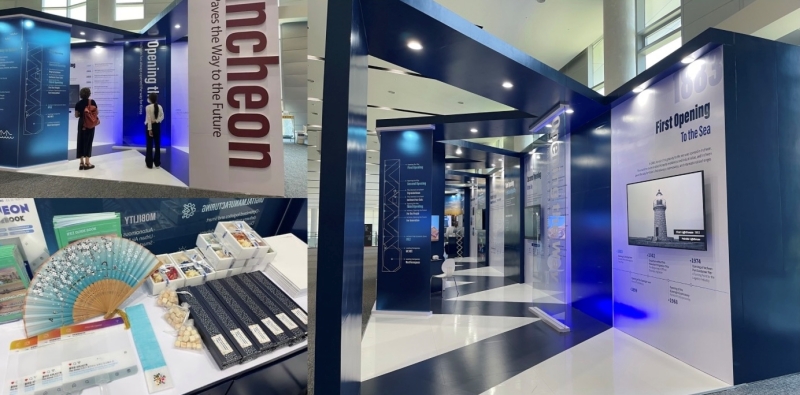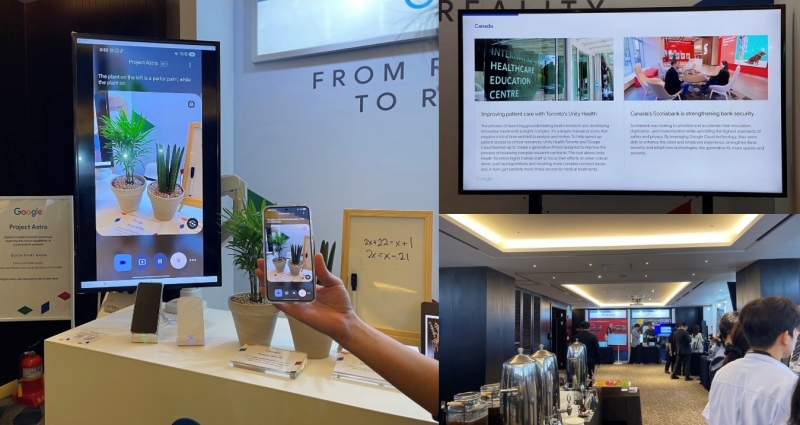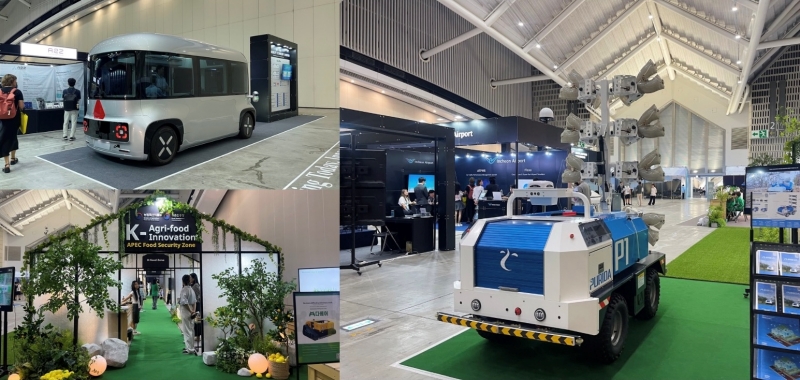- 한국어
- English
- 日本語
- 中文
- العربية
- Español
- Français
- Deutsch
- Pусский
- Tiếng Việt
- Indonesian
By Honorary Reporter Marie Laurence Houde from Canada
Photos = Marie-Laurence Houde
Honorary Reporters on Aug. 5 visited the exhibition booths of the Asia-Pacific Economic Cooperation (APEC) third Senior Officials' Meeting (SOM3) in Incheon.
Following SOM1 in Gyeongju, Gyeongsangbuk-do Province, in February and SOM2 on Jeju Island in May, SOM3 highlighted digital technology and artificial intelligence (AI), food security, women and the economy. Honorary Reporters saw the latest AI developments across industries and explored their future applications in Korea.
The visit began with an overview of Korea's long-standing ties with APEC. The country hosted the 2005 APEC Economic Leaders' Meeting in Busan, and will do so again in October this year at Gyeongju Hwabaek International Convention Center in Gyeongju, Gyeongsangbuk-do Province.
Our first stop was the booth of the Korea Tourism Organization featuring Incheon's remarkable growth and the creation of the city's Songdo International Business District, the venue of SOM3. The booth highlighted Incheon's transformation from a bustling port city to a hub of technological innovation through milestones including the expansion of the port, launch of Incheon International Airport, Songdo's designation as Korea's first free economic zone and establishment of foreign university campuses.
Next was a cultural booth offering an immersive glimpse into Korea's history and tradition featuring tourist materials and gifts, interactive Hanbok (traditional clothing) fitting and snapshots at a photo booth.

The booth featuring Incheon highlights the city's development over decades.
Other exhibition booths featured leading global companies such as Meta, Google, Kakao, Naver Cloud, HP, Visa and Walmart and how they use AI for their customer needs and project demand.
The most impressive booth was Google's with its Project Astra integrated with its AI assistant Gemini. In use in countries like Canada for health care and banking, its multilingual and real-time capabilities set it apart from other AI models at the exhibition.

Gemini's Project Astra (left) shows how AI can identify objects and answer questions in real time at its exhibition booth.
Our final stop was the Ministry of Science and ICT's booth, which showed prototypes of driverless buses and AI-powered agricultural tools. One was for a self-driving robot for mapping farmland, cutting grass and distributing water or pesticides, a critical innovation given Korea's aging rural population and labor shortage in farming.
This prototype uses a similar mapping system to those in driverless taxis and Teslas and will make its commercial debut later this year or next year.

The Ministry of Science and ICT booth shows a driverless bus (upper left), agricultural development (lower left), and a robot for cutting grass and spraying water and pesticide.
This experience offered a fascinating look at promising tech advances and how culture, technology and policy can combine to shape the world's future.
msjeon22@korea.kr
*This article is written by a Korea.net Honorary Reporter. Our group of Honorary Reporters are from all around the world, and they share with Korea.net their love and passion for all things Korean.